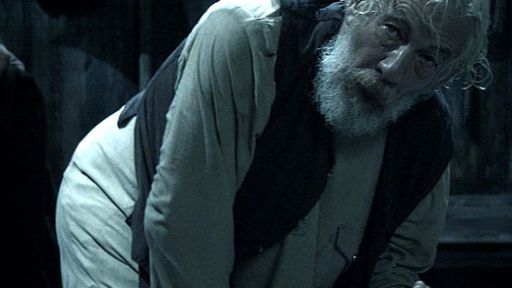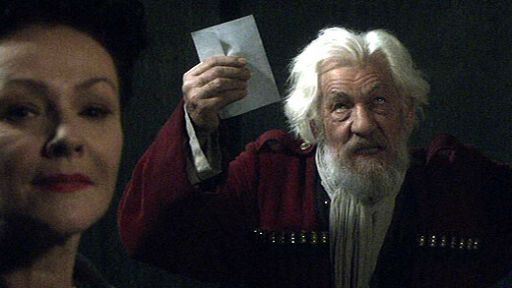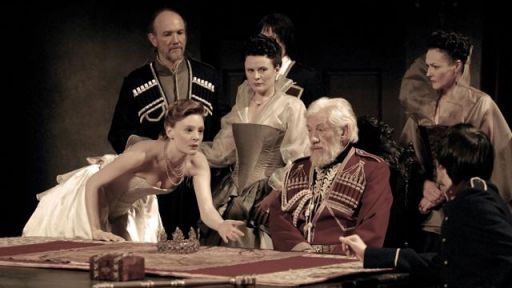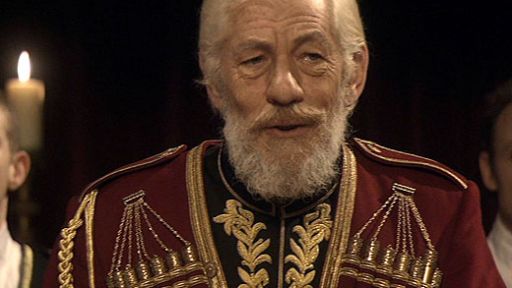Organization
This web edition of King Lear uses primarily the Folio (F) text of 1623 as a basis, but it adds several longer passages and one entire scene from the Quarto (Q) text of 1608. It also adds or substitutes several individual words or phrases from the Q text. It is thus a conflated text.
It has divided the play into the conventional five acts and scenes within each act. However, to manage the longer scenes, it has broken them into segments, yielding 40 scenes or segments.
Each scene or segment of a scene has a web page. Each web page (of the play itself) begins with a short synopsis of the scene or segment, followed by a clip from the McKellen film for that scene or segment, followed by the play text. Note that Act IV Scene III does not appear in the McKellen film, thus has no clip.
Notation
The play text includes the entire text of the conflated edition. However, the McKellen film cuts lines from every scene or segment. The lines or words cut from the text are indicated by red type.
This edition designates Acts with Roman capitals; it designates Scenes with Roman low case letters (unless the word “scene” is used, in which case it uses Roman capitals); it designates segments with a letter from the Latin alphabet. Thus the third segment from Scene II of Act II would be labeled II.ii.c.
Quarto Text
Longer passages from the Quarto text inserted in the Folio text are designed by [square brackets]. This edition does not indicate individual words or short phrases taken from the Quarto text, either as substitutes or additions.
Annotations
Words or phrases that are underlined have a corresponding annotation. Annotations appear in a light box when clicking on the underlined word or phrase. The light box closes by clicking anywhere except the light box itself.
Stage Directions
All stage directions appear in Italic type. For the most part stage directions without brackets come directly from the Folio text; no such direction has been omitted, although one or two have been moved a line or two to more accurately reflect entrances. Spelling has been modernized (Fool instead of Foole, for example) and regularized (Gloucester everywhere, rather than sharing time with Gloster as happens in the Folio text). The name Bastard for Edmund has been retained in the stage directions, but not in line names. Stage directions in [brackets] have been added later. This edition adds no stage direction that is not in some other edition of the play.





